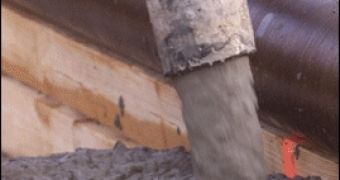Since there is not water on the Moon and carrying anything there from the Earth would cost loads of money, it is obviously cheaper to use directly the Moon's resources in order to make water-free concrete. US scientists developed a method that would allow for substituting water with the sulfur found in lunar dust. The resulting concrete would be very solid and would dry much faster than the regular one obtained here on Earth.
As NASA plans the future visit to our natural satellite, they also consider establishing a permanent base there. But according to Houssam Toutanji, a civil engineer at the University of Alabama in Huntsville and the one who came up with the idea of using Moon dust for concrete, “It costs a tremendous amount of money to take even 1 kilogram of material to the Moon. Depending on who you talk to, the cost could be $50.000 to $100.000”. That's why obtaining concrete directly from the location's resources would prove far cheaper in the long run.
The sulfur that would act as a binder for the Moon dust can be extracted directly from it. “You want the sulfur to be in a liquid or semi-liquid form to work as a binding agent,” explains Toutanji. This would imply that the dust is heated to temperatures of about 130° to 140° C. After cooling, the mixture immediately becomes rock-solid, able to bear about 170 times the atmospheric pressure (approximately 17 megapascals). “Within an hour you get an ultimate-strength concrete,” claims Toutanji. “With normal concrete you have to wait seven days, in extreme cases even 28 days to get maximum strength.”
After the successful simulation of the Moon dust properties in laboratory conditions, the last aspects of making concrete out of lunar soil remain to be developed. This regards building and carrying devices that would excavate the soil, heat the dust to obtain sulfur and mix the ingredients together. Also, there's the problem of obtaining energy for all the process, but there already are a lot of suggestions to choose from. When all this is done, we will be one small step closer to colonizing our own satellite, at least as a research base.

 14 DAY TRIAL //
14 DAY TRIAL //